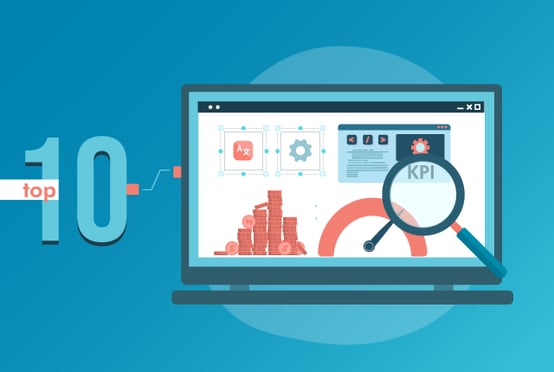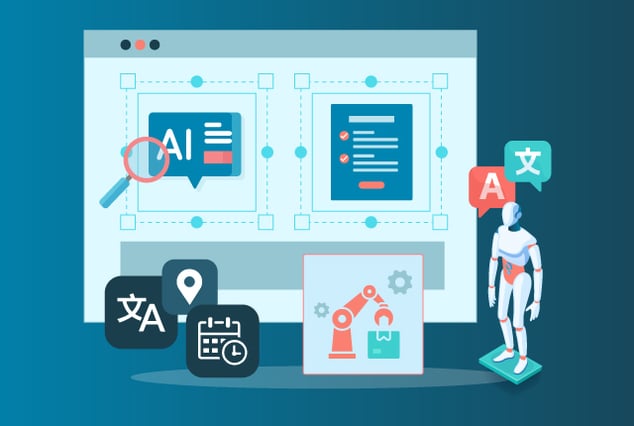
In today's fast-paced world of B2B sales, expanding into new geo markets is a good strategy for businesses seeking to boost revenue and grow their brand. The localization industry is evolving into a data-driven and innovative field, much like software development or marketing. It is crucial for teams to stay informed about current trends to make informed business decisions that prepare them for the future. However, effectively communicating with target customers in their native language and understanding their cultural practices can be a daunting task and a major obstacle to achieving success. This can result in lost sales and damage to a company's reputation, making it essential for businesses to prioritize effective localization.
By implementing proven best practices, businesses can improve customer engagement, increase sales, and establish a strong brand reputation in new markets. In this blog, we will delve into 10 essential B2B localization best practices in 2023 that can help businesses overcome language and cultural barriers and achieve success in the global marketplace.
Best Practices of B2B Localization
When it comes to B2B localization, there are best practices that can help ensure a successful adaptation of your products or services for international markets. Here are some key best practices to follow:
-
Develop a Localization Testing Strategy With Your Own Research
To develop a successful localization testing strategy, businesses should conduct comprehensive research and create a plan with specific tests and criteria for success. Before taking action, ensure that the product or service is suitable for any new market. Write your own information and focus on the features of your business, products, and B2B environment. Based on the requirements, identify a testing strategy. Employing competent localized testers to provide valuable feedback is also essential. By investing in a well-designed localization testing strategy, businesses can improve engagement rates, conversion rates, and customer satisfaction while achieving their global expansion goals.
-
Create and Monitor KPIs
Creating and monitoring KPIs is an indispensable practice for businesses striving for successful product localization. Before starting any localization testing activities, it is essential to define the localization checklist, that is, what are the parameters you want to track and how software quality will be measured. A few examples of Key Performance Indicators (KPIs) that you can track include the number of language-related complaints, software support requests from foreign markets, and localization satisfaction ratings. By implementing a data-driven approach, businesses can stay ahead of the competition and provide localized products that meet the needs of their target audience.
-
Localize Required Parts of Your Product
Localizing a product can be a daunting and expensive task for businesses, but there is an alternative strategy that can save costs while still effectively reaching the target market. By localizing only certain parts of the product, such as the user interface or customer support, businesses can provide a tailored experience that resonates with the target audience. This approach allows businesses to efficiently allocate resources and reduce costs while still providing a localized experience that is well received. By identifying critical elements to localize and adapting them to the cultural nuances and preferences of the target market, businesses can effectively penetrate new markets and increase their global reach.
-
Have Competent Localized testers
Having a team of competent localized testers is a vital component in guaranteeing the accuracy and effectiveness of localized products. To make sure your product is ready for global release, your product needs to be tested with local testers who are proficient in all aspects of localization testing, from language and culture changes, switching, and hardware features to the interplay between translation and user interface. Their expertise allows them to provide invaluable feedback on the localized product, highlighting any linguistic or cultural errors that require attention.
-
Content Prioritization
Prioritizing content for localization is a crucial practice for businesses seeking to effectively reach their target markets. Optimizing localization efforts and streamlining the process can help businesses reduce costs and improve efficiency. While it's ideal for all localized content to be of high quality, in reality, businesses have different levels of content with different quality requirements. Quality is required but may not always be a priority if other factors such as speed or availability of information become critical. To get the most out of your localization efforts, remember to create different levels of content, make a localization testing checklist and prioritize budgets accordingly.
-
Accomplish Your Contractual Obligations
Keep a record of your contractual obligations, like the languages you offer and the level of localization you promise. Failure to comply with these obligations can lead to costly legal problems. Working closely with legal experts and language service providers is key to ensuring that all content is accurately translated and localized in compliance with local laws and regulations. Prioritizing contractual obligations ensures localized products meet legal requirements and audience expectations, leading to successful international expansion.
-
Evaluate the Cost of Localization Errors
What will the cost be in case of significant localization errors and how easily can they be corrected? It will be much easier to fix a localization error that appears in the software interface, as opposed to a physical product that is already in circulation and needs to download and repackage. Be proactive and plan for contingencies to minimize error repair costs. This practice is essential to minimize financial losses and maintain a positive brand image in international markets.
-
Plan Ahead for Brand New Product Acquisitions
Acquisitions can occur suddenly, requiring businesses to rapidly integrate new products and develop new content. To anticipate these sudden changes, create a 30-60-90-day plan and make sure you can stick to it. But before businesses make any suggestions, take the time to talk to your new team and stakeholders to understand their current localization and globalization processes. By proactively planning for localization needs, businesses can ensure that their products are accurately adapted for their target markets, fostering a positive brand image and achieving success in international markets such as the creation of a unifying terminological database.
-
Stay Attentive to Online Discussions and Industry Events
Staying attentive to online discussions and industry events is a crucial practice that involves actively seeking out and participating in relevant virtual communities and events associated with the target market and industry. It is important to get an idea of people's views from sources other than feedback provided directly to the organization. Consumers will often talk about their experiences on social media or at company events. Use these channels to your advantage – collect the data you need to inform your localization goals and practices. Furthermore, staying up-to-date with industry events and discussions can help businesses stay ahead of the competition in their respective markets.
-
Experimentation with Machine Translation
Exploring the potential of machine translation is a practice that involves using automated translation tools to expedite the localization process and potentially reduce costs. Artificial intelligence and machine translation have a lot to offer even if you are not an expert in this technology. Have conversations with people who understand and learn about it with machine translation to explore how it could serve your business. Specifically, learn more about practical applications and consider using them to increase your capacity and productivity.
Conclusion
In conclusion, the 10 best practices for software translation in 2023 place a strong emphasis on building a testing strategy, setting up and tracking KPIs, giving content priority, and having skilled testers. B2B businesses can enhance their localization efforts and succeed in international markets by adhering to these best practices. To achieve this level of localization and globalization, businesses must partner with a reliable and experienced testing company. QASource can help businesses ensure that their products and services are ready for the global stage and that they resonate with customers from different parts of the world. With QASource, businesses can focus on their core competencies while leaving the testing to the experts. Don't let buggy software hold you back, contact QASource today and take the first step toward software success.
